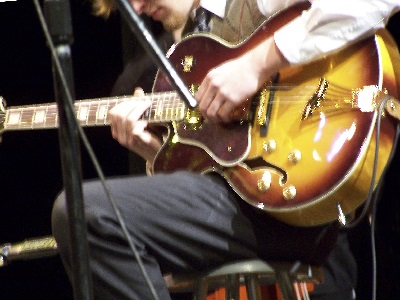Guitar Chord Embellishments to Add Color to Your Music
 We all have our go to chords that we love. But after a while, those chords lose their magic. We know that the guitar contains dozens of octave variations, but what good does this do if we don’t understand how to implement them?
We all have our go to chords that we love. But after a while, those chords lose their magic. We know that the guitar contains dozens of octave variations, but what good does this do if we don’t understand how to implement them?
Today we will be discussing guitar chord embellishments. Unlike extended chords, embellishments are simply chords that have been rearranged. Before we get into the meat of the lesson, however, it is important that you understand a few things.
First Off, You Need to Understand Inversions And How They Work
If you don’t understand how inversions work, as embellished chords are simply chords that are inverted or brought to different octaves, it is important that you learn. While we will be discussing the qualities brought by the embellishment briefly, it is dire that you understand just what exactly is being done to the chord.
It is also imperative that you be able to build triads. Many chords are built off of triads, and if you don’t understand which notes fit into which triads and why, then you may end up making some large mistakes without understanding it. Worse than anything, those mistakes will become habits. You may be deconstructing your music without any awareness of the fact.
Next Up, You Need to Understand Keys
Chords are built in specific keys, and to fully understand why the chords can be rebuilt and certain ways, you need to fully understand scales, keys, and their respective properties.
Once you have at least moderate comprehension of scales, triads, and inversions, you can move on to the lesson. If you don’t, I strongly suggest you take some time beforehand to do so.
Now, On to the Lesson
Let’s say we are playing a song in C Major, and that song is following an I – IV – V progression. For this lesson, we will choose triads as our chords of choice.
Our tonic triad would consist of the notes C, E, and G.
Our sub dominant triad would contain the notes F, A, and C.
Our dominant triad would be built of the notes G, B, and D.
The fact that triads only contain three notes may already seem limiting and boring in and of itself. This is why I chose to work with them. The first way you can embellish a chord is simply by playing it in a different octave. Of course, this can get stale fairly quickly; it’s literally the same exact chord.
The Second Way You Can Embellish a Chord is by Inverting
Inverting a triad simply means changing the position of the third and fifth in relation to the root. By nature, triads begin in first inversion, with the root being the lowest sounding note. This can be altered.
Our first guitar chord embellishment involving a triad would mean to make the third the lowest-sounding note. With our C Major triad, the order would change to E, G, and C. Not only is this a whole new chord sound, but there is more!
Next up is a second inversion triad. This means the fifth will be the lowest sounding note. Our second inversion C Major triad would change in order to G, C, and E.
Notice how the property has completely changed. That’s guitar chord embellishment!
Now that you know how, try embellishing your own chords! Be creative, but remember to keep within the notes of the key; embellishment isn’t changing the notes of the key, only the order. Have fun!
Learn Whenever And Wherever You Want…
Guitar Tricks is a MASSIVE online repository of more than 4,000 professionally recorded video guitar lessons. They also feature a core learning system that is specially designed to help guitarists of all levels progress in their skills.
Check out Guitar Tricks and get instant access with a 14-day trial today!







Leave A Comment